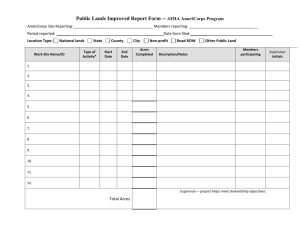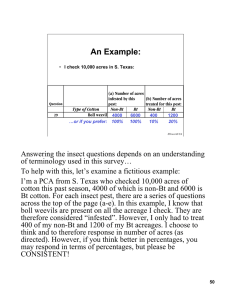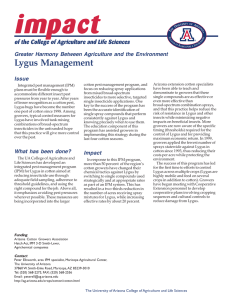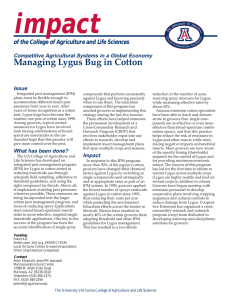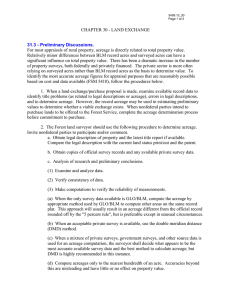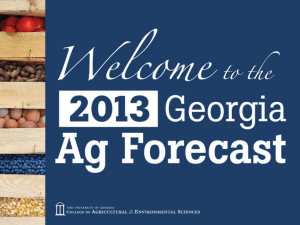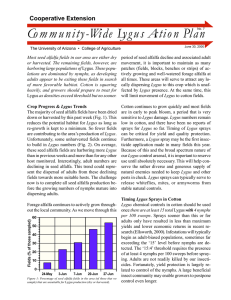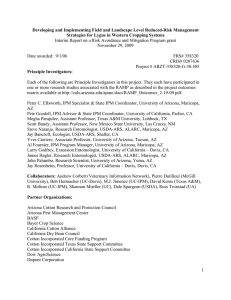Instructional Supplement to the Cotton Insect Losses Questionnaire
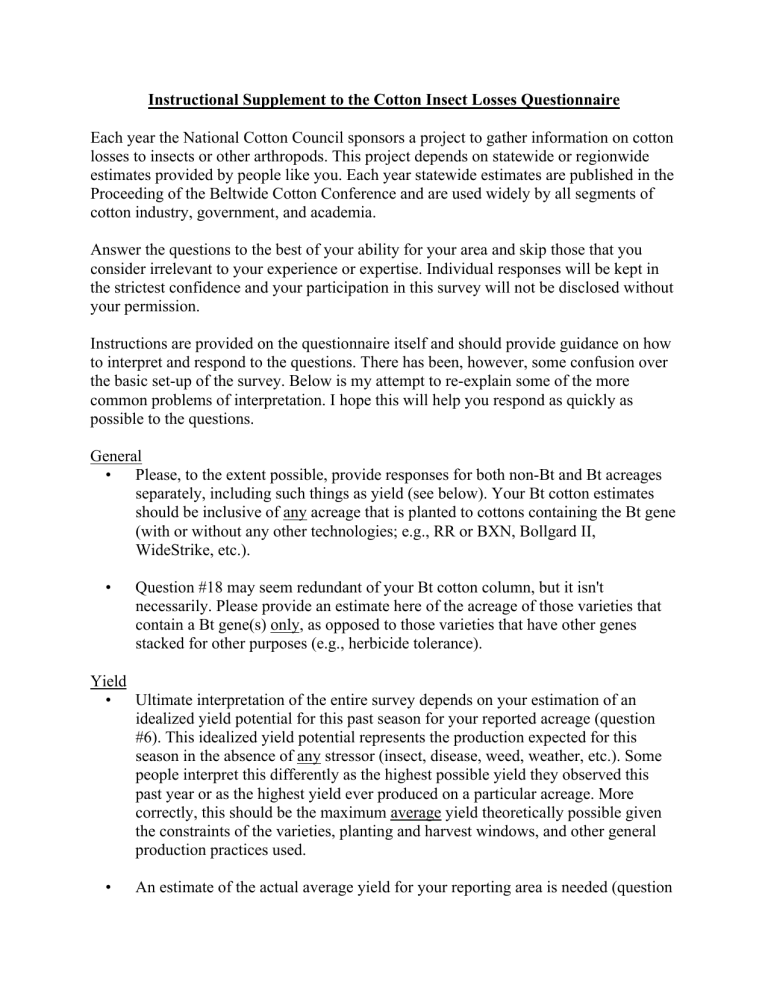
Instructional Supplement to the Cotton Insect Losses Questionnaire
Each year the National Cotton Council sponsors a project to gather information on cotton losses to insects or other arthropods. This project depends on statewide or regionwide estimates provided by people like you. Each year statewide estimates are published in the
Proceeding of the Beltwide Cotton Conference and are used widely by all segments of cotton industry, government, and academia.
Answer the questions to the best of your ability for your area and skip those that you consider irrelevant to your experience or expertise. Individual responses will be kept in the strictest confidence and your participation in this survey will not be disclosed without your permission.
Instructions are provided on the questionnaire itself and should provide guidance on how to interpret and respond to the questions. There has been, however, some confusion over the basic set-up of the survey. Below is my attempt to re-explain some of the more common problems of interpretation. I hope this will help you respond as quickly as possible to the questions.
General
• Please, to the extent possible, provide responses for both non-Bt and Bt acreages separately, including such things as yield (see below). Your Bt cotton estimates should be inclusive of any acreage that is planted to cottons containing the Bt gene
(with or without any other technologies; e.g., RR or BXN, Bollgard II,
WideStrike, etc.).
• Question #18 may seem redundant of your Bt cotton column, but it isn't necessarily. Please provide an estimate here of the acreage of those varieties that contain a Bt gene(s) only, as opposed to those varieties that have other genes stacked for other purposes (e.g., herbicide tolerance).
Yield
• Ultimate interpretation of the entire survey depends on your estimation of an idealized yield potential for this past season for your reported acreage (question
#6). This idealized yield potential represents the production expected for this season in the absence of any stressor (insect, disease, weed, weather, etc.). Some people interpret this differently as the highest possible yield they observed this past year or as the highest yield ever produced on a particular acreage. More correctly, this should be the maximum average yield theoretically possible given the constraints of the varieties, planting and harvest windows, and other general production practices used.
• An estimate of the actual average yield for your reporting area is needed (question
#5). This estimate may be based on already harvested acreage combined with your estimate of the production on the acreage that remains to be harvested in your area.
Insect Information
• Acres infested (pest questions 29–50, part a) and treated (part b) can lead to some confusion, too. Acres infested is a rather broad classification of all the acres where the pest was present during the season. Acres treated is only those acres which received treatment for the pest. Remember, reduction (e) is the total loss in percent over the entire infested acreage (a). Thus, it represents the losses on infested, but untreated acreage, as well as losses on treated acreage in spite of those treatments.
Insecticide Information
• The cost of one application per acre does include the costs of both the insecticide itself and the application costs.
• When multiple targets of a spray are intended (see next) and/or when combination sprays (mixtures) are applied, things can get confusing. My suggestions are this. If a combination is used explicitly to control two different pests, then that is the equivalent of spraying twice, once for each pest and your responses should reflect this fact. If, however, a combination is required to control a single pest (e.g.,
Danitol + Orthene against whiteflies), that represents just one spray. If the rates chosen and intent reflect the targeting of two pests (e.g., that same Danitol +
Orthene spray but with Orthene at a full lb rate for the control of Lygus), that would represent 1 full spray against whiteflies and one against Lygus.
• It is possible to respond with fractional sprays, too. For instance, you may have used a compound such as Orthene to control Lygus primarily, but also to control something else (e.g., cotton fleahopper, stinkbugs, thrips, whatever). In this case, you can think of this spray at any fractional rate you consider appropriate; perhaps,
0.8 against Lygus and 0.2 against another pest that was present (e.g., fleahoppers).
IMPORTANT NOTE: This survey is for UPLAND cotton only; however, if you would like to provide separate estimates for Pima cotton, please create an additional column or add an extra sheet of paper as needed.
Thanks! We look forward to receiving your data soon!
(Mention of products in these instructions are for illustration purposes only and do not imply endorsement of any particular product mentioned or not mentioned)

